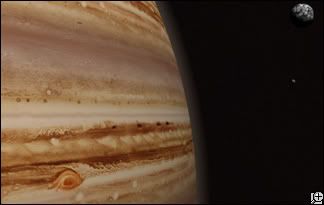The Latest Technology is THE place to get all of the Latest Technology Update ,News , Latest Invension, Technology Regarding Space,Human,Computer,Electronics,Machinary And Many More.
The Latest Technology is THE place to get all of the Latest Technology Update ,News , Latest Invension, Technology Regarding Space,Human,Computer,Electronics,Machinary And Many More.
Radio Buffs Tune In to Jupiter
From his place in New Mexico, Thomas Ashcraft recently took in a live show -- even though it unfolded some 390 million-plus miles away on Jupiter. All he needed was a few antennas, some short wave radios and a recorder to document the event.
Listen to a recording of Jupiter's sounds here, courtesy of Thomas Ashcraft.
It turns out Earth's big brother can belt out a tune ... well a few notes anyway. The radio waves come to Earth in two varieties: long bursts and short ones. They appear when particular parts of Jupiter are aligned with Io -- its closest and most volcanically active moon -- and receiving stations on Earth.
The stations can be very simple. Ashcraft, a 58-year-old artist who has been listening to the sounds Jupiter, the sun and other celestial bodies for about 20 years, uses a directional antenna system known as a Yagi antenna, a series of secondary dipole antennas and a short wave radio.
There's a group called Radio Jove that sells kits for under $20. If owning the goods isn't your thing, the University of Florida Radio Observatory streams its catch live on the Internet.
The short bursts last just a few milliseconds before shutting down and shifting over to other radio frequencies, Francisco Reyes, director of the UF radio observatory, told Discovery News.
"It's like pebbles or hail falling on a tin roof," Reyes said.
The long notes can linger for 30 minutes, or even an hour or two.



